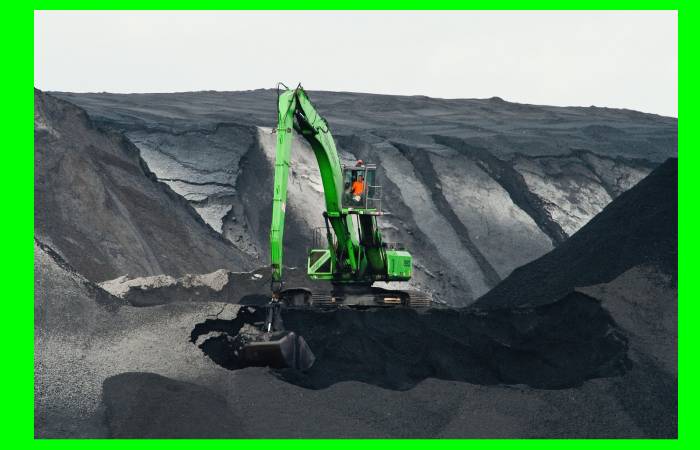Definition
Mining Industry – Mining is an economic activity responsible for the extraction and exploitation of minerals found in the soil and subsoil, being essential for the life of any society and, together with agriculture, are the oldest of humanity. Its extraction has evolved from using manual tools to using adequate systems with high-tech equipment, which allow technical, economic, social and environmentally viable exploitation, that is, responsible mining.
What Are The Advantages Of Mining?

There are many other benefits of It and everything around us has mining components. Minerals have multiple applications in numerous fields of human activity, which is why they are a strategic resource of great importance for the economy of the countries that possess them.
For example, minerals are essential for life since the human body requires some minerals for its functioning, which are present in food, and sometimes we must consume them as a supplement. Likewise, they are present in the things we use, and many commercial products are minerals or obtained from a mineral.
What Is The Mining Sector?
The mining sector comprises the economic activities in charge of the extraction and transformation of natural resources, as well as all the authorities that regulate it, the unions and institutions that provide their services. It is also part of the energy sector, including the extraction of fossil fuels.
The mining sector is important because it provides a large part of the other sectors with raw materials and the country with economic resources for being one of the countries with the largest exports, royalties contributions, employment generation and investment to advance this activity.
What Is The Mining Potential?
The Subsoil Resource Potential corresponds to the favorability for the occurrence of metallic, non-metallic and energetic mineral resources in a determined area.
The results of the geological and mining studies confirm the mining potential, which is integrated into the resource that is considered exploitable and establishes the number of mineralized reserves in each region or each country.
Under these premises, framed in the axes of legality, entrepreneurship, and equity of the Pact for Colombia, Pact for Equity, the Strategic Plan for the Mining Sector works on three challenges:
- Diversify the mineral production matrix.
- Promote agile, efficient and coordinated management.
- Promote the legality and promotion of mining activity.
These challenges have a compliance horizon in the medium and long term. Achieving them means working in a coordinated manner on different structural aspects, such as regulatory developments, characteristics inherent to competitiveness, relations with the territory, information and sustainable development.
What Are The Main Reasons There For Mining?
Mining is, without a doubt, an important component of our lives. Before we jump into the changed types of mining, let’s discuss the following: what are the reasons for mining?
Bear in mind: An average child born today will need a period supply of 750 pounds of zinc (for household fixtures, cosmetics, and more), 800 pounds of main (for batteries, medical devices, and more), 1,500 pounds of copper (for electrical wires and more), 3,593 pounds of aluminium (for appliances, cans, aeroplanes, and more), and 32,700 pounds of iron.
How Many Types Of Mining?
Usually, four types of mining and it Industry are the most common.
surface mining
Surface mining is best suited for extracting minerals near the earth’s surface. It is also often a more profitable mining method than underground mining. Common minerals that are removed by surface mining are some of the most frequently mined, such as coal, iron, and bauxite.
Underground mining (or subsurface mining)
Underground mining is best for extracting minerals deep below the earth’s surface. Common minerals extracted by underground mining are gold, lead, and silver. It is significant to remember that both surface and underground mining can remove many minerals. The deposit’s relative depth and the mineral’s economic value play an important role in determining which mining method to use. An underground mine can have a depth of 300 meters or 3 kilometres. For example, the deepest underground mine on earth, the Mponeng gold mine, which is located in South Africa, has an operating depth of more than 3.1 km.
Placer Mining
Placer mining is the method of separating valued metals from sediments by screening. This type of mining is carried out in river beds, sands and environments with a natural accumulation of deposits. Common minerals collected through placer mining include platinum, tin, and diamonds.
in situ mining
In situ mining is the method of recovering minerals from the earth without removing the mixture of rocks and minerals from the surface for processing. This is skilful by injecting a solution that dissolves the mineral into its original location and pumping the explanation that now includes the minerals to the surface. The most common mineral that is extracted by in situ mining is uranium.
For miners, four of the considerations they include in choosing between these mining methods are the location of the ore, the financial value of the deposit, environmental concerns, and the chemical composition of the ore.
Opencast mining
Open-pit mining removes the earth to access mineral deposits and does so vertically in the open pit. This method best suits mineral sums close to the earth’s surface but does not accumulate horizontally. Open pit mining usually affects a smaller area. This is because the excavation activity continues deep into the ground and not horizontally on the surface, like open pit mining.
Conclusion
The Mining Work growing world demand for metals has significantly increased the international price of metals during the last five years, which is now between double and triple its value in the year 2000 (see figure below). This has also prompted the exploration and extraction of more mineral resources and has led to a historical foreign exchange income in the national economy.


